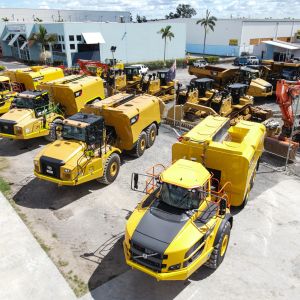In this month’s latest news offering, we focus on industry predictions for 2017, dispelling “non-genuine” misinformation, and a fun POP QUIZ for you all! Read on to find out more…
Dispelling “non-genuine” misinformation
Workshops and machinery owners alike should take on board the message from the AAAA regarding the misinformation in the market about non-genuine parts. Their research of 325 independent mechanical repair workshops on automotive parts lead them to launching an information campaign that dispels most of the myths about the risks associated with using parts sourced outside the OEM supply chain.
“It is important to note that car manufacturers do not make the majority of the parts themselves. They are almost always made by third-party component suppliers and put in boxes with the manufacturers brand on them. It is common for these same component suppliers to also sell the parts under their own brand – same part, same factory, different box,” said the Executive Director of AAAA, Stuart Charity.
Charity goes on to highlight that every manufacturer and distributor has the same obligations under Australian Consumer Law, and all operate under the same guidelines as issued by the ACCC. “If a part is non-genuine, but is interchangeable with the genuine part, it would be viewed as being fit or appropriate for the purpose and would therefore not void the manufacturer’s warranty.”
Charity elaborates on this by explaining that it is critical to only source parts from reputable Australian based suppliers to get this certainty, as buying from unknown sources on the internet in the hope of getting cheaper pricing removes this legal protection.
As to the reasons why OEM manufacturers push to try to brand anything that is not “genuine” as counterfeit using pretences of things like “safety”, the AAAA research demonstrated that it is due to OEM’s supporting their own commercial interests by using a failure of Government to address industry systemic competition issues. The report identifies a potential sharp decline in competition over coming years, “and the price of this decline in competition and choice will be paid by every Australian.”
RD Williams has for a long time told our customers that we’re happy to assist with providing quality parts at competitive prices, even though we know this sometimes gets used to go back to the OEM’s to reduce their prices. However, customers understand that if RD Williams were no longer here to keep the OEM’s honest, they’ll be paying higher prices in the future. So, please help us continue to help you keep your costs under control by making RD Williams your first stop for all your earthmoving needs.
To view the full AAAA release visit: https://www.aaaa.com.au/advocacy/the-truth-about-genuine-parts-information-campaign-launched-by-aaaa/
2017’s Crystal Ball
Last years’ crystal ball worked unexpectedly well. Read last year’s predictions here: www.rdw.com.au/media-rdw/news/225-what-lies-ahead).
The predictions for 2017 reflect more confidence about the coming year than in recent times, even though I struggle to justify exactly why. Our industry has been more buoyant in recent months with an increase in activity. Perhaps the optimism comes from last year’s Brexit and Trump electoral wins, which experts were all adamant would crash our financial systems but instead saw markets rally, and maybe we’re set for some really positive shake ups in the coming year.
For the Earthmoving industry, I envisage well run businesses to thrive and continue to win work. Those that will make money will be doing so because they have invested in good used machines (lower depreciation and finance costs), and they will keep running costs down by using competitively priced parts, whilst keeping machine utilisation high. We are all however exposed to a year in which a large number of construction businesses will collapse (predictions are over 10% by the end of the financial year, with bigger firms generally more at risk than smaller ones), with each of them having an unpredictable trickle-down effect upon the industry. The infrastructure investment deficit in Qld will continue as there is very limited funding available (the Government is broke, and there is no viable model to entice private funding). Mining has seen a bit of a rebound, and whilst raw material prices won’t return to the boom levels, viability has improved and existing mines will invest in efficiency improvements to generate profits. New mining activity will be non-existent because of the continued use of “green” legal action to delay project commencements (Adani, New Hope and others will still be burning money waiting for all the hurdles to be cleared).
For Australia, we are stuck with do/achieve-nothing, inefficient and wasteful Governments in most states and Federally. Out of pure self-interest for the politicians, the Queensland Government would like to see out the full term (early 2018), but with the mid-year forecast due in December they can’t find any more gnomes around the money tree at the bottom of the garden to shovel imaginary money around, so I expect an election around November. This will shake up the cosy duopoly currently in power. None of the Governments (except NSW) have done anything to bring finances under control, with for instance the Federal Government alone currently borrowing $158 million PER DAY to pay for its spending. When you combine our private (we have the highest household debt level in the world) and public sector debts and consider our continued unsustainable petulance to live beyond our means, the borrowing costs for Government and home owners alike will start to climb in 2017 as interest rates will be increased by the lenders (the RBA is becoming increasingly irrelevant). This will “surprise” and probably panic some people, especially those with loan repayments on the brink of their affordability (over a third of borrowers) and will lead to probably a small decline in housing prices. However, it’s frequently forgotten that a lot of particularly retirees (the decreasing pool of self-funded ones) rely on interest income, and will therefore have slightly more spending power which will move to balance the market.
Global impacts are more likely than domestic events to influence Australian wealth generation, particularly the fact that the US and other major economies are lowering their corporate tax rates substantially. Australia will therefore continue to lose attractiveness as a place to invest and establish a business, and as a result existing foreign companies and multinationals will use transfer pricing and other mechanisms to further reduce their revenue and taxes in Australia. Our tourism and education industry will benefit from a continued low Australian dollar, and because both have relatively high labour content, will generate some employment, albeit at below average income levels. Our natural advantage of cheap energy availability will continue to be squandered and force the closure of yet more energy intensive industries. We can expect energy blackouts to increase in South Australia and Victoria as the base load generation gets shut down and “replaced” with unreliable and intermittent wind turbines and solar panels, with the only positive hope from this that the effects will be very short term (pigs might fly?) because of a revolt against sky rocketing energy bills and frustration with the inconveniences that come from third world blackout events (from food spoilage in the fridge to employment disruption). Here’s hoping that a “draining of the swamp” will spread its wings across the globe and start to shake up our economy and public sector.
Pop quiz!
Nothing like a quick pop quiz to test how up to date you are on some key facts:
- We need a big and growing population to compete in a globalised world
- True b. False
- Used Equipment can get finance just as easy as new equipment
- True b. False
- Comparing Australia’s manufacturing sector’s proportion of our economy’s GDP between 2016 and 1960, it has declined by:
- 30% b. 50% c. 80%
Review your answers below.
As always, onwards and upwards!
Fred Carlsson
General Manager
QUIZ ANSWERS:
- We need a big and growing population to compete in a globalised world
- True b. False
Answer: False. 18 of the world’s 20 countries with the highest standard of living have populations smaller than Australia’s, and most of them have less than a third of our population. The two exceptions are the US and Germany.
- Used Equipment can get finance just as easy as new equipment
- True b. False
Answer: True. Quality used equipment (especially from a reputable dealer) can be financed just as easy as new equipment.
- Comparing Australia’s manufacturing sector’s proportion of our economy’s GDP between 2016 and 1960, it has declined by:
- 30% b. 50% c. 80%
Answer: c. 80%. In 1960, manufacturing accounted for 29% of GDP, today, it only represents 5.9%. Australian companies need to become competitive by the removal of unnecessary cost burdens.



